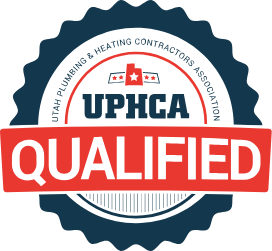Gas-fired furnace efficiency is expressed by a unit’s AFUE percentage. Short for annual fuel utilization efficiency, the AFUE rating provides a metric for comparing the efficiencies of various furnaces. AFUE represents the percentage of fuel consumed by a furnace that actually contributes to useable heat versus the amount lost in the combustion process. A standard-efficiency furnace has an AFUE of 80%.
Currently, Utah homeowners are being urged to upgrade their existing furnaces to a minimum 80% AFUE efficient furnace before a new law bans the production and sales of this furnace with this efficiency standard. Once this law takes place, you will not be able to purchase a furnace with an AFUE rating lower than 92%, which is at least $1,000.00 more expensive than a furnace with an AFUE of 80%. Although this information is accurate, we’re not so sure that you should feel the urgency to ACT NOW. When will this updated efficiency standard actually be made effective? To answer that question, we researched the history of DOE rulemaking.
History of France AFUE Rating Standards
Records state that in 1987, the minimum AFUE rating was set at 78%, and energy efficiency standards remained unchanged for 20 years! Almost 10 years ago, the Department of Energy (DOE) proposed raising the minimum AFUE rating from 78 to 80 percent- a change that would have a minor impact as most gas furnaces on the market already met or exceeded that level. However, before that rule could be implemented, it was challenged in court. Two years later, that same group propositioned the DOE to establish separate regional standards, as heating needs vary from state to state across the nation. The DOE considered the suggestion and in 2011, issued an agreement establishing a regional standard at 90% efficient in colder climates, such as Utah, and remaining at 80% efficient in warmer climates. Exactly what they asked for! But before the effective date, this rule was challenged due to the belief that the DOE failed to account for various costly issues when upgrading to more efficient furnaces. So the effort to enact regional standards fell apart, and the minimum efficiency standard remained at 80% AFUE.
Now, after years of the DOE compromising to meet each new demand and continuing to be challenged, they are fighting back harder than ever by announcing a proposal to adopt a nationwide 92 AFUE standard. While the new proposed efficiency standard will save U.S. consumers hundreds of millions of dollars in lower wintertime heating bills and reduce carbon pollution, it will also harm a lot of people in lower-income brackets who are unable to shell out the higher upfront costs and wait patiently for their newer, more efficient furnace to pay for itself.
As you can see, U.S. consumers have actually been confronted by this efficiency standard modification for several years. Each time a new proposal goes to court, an issue is uncovered, the rule is challenged, and it is sent back to the DOE for reconsideration. It is possible that the current rulemaking will be upheld without rebuttal, but given that not long ago, the DOE agreed that a new level of 90% in the cooler climates and the existing 80% in the warmer climates was a reasonable AFUE standard, and they suddenly feel that a 92% nationwide standard is appropriate it seems unlikely. Whichever direction the court rules, it will take several more years before an updated efficiency standard could be made effective.
At this time, the outcome still remains uncertain.
What does this mean for you?
…You still have options!






